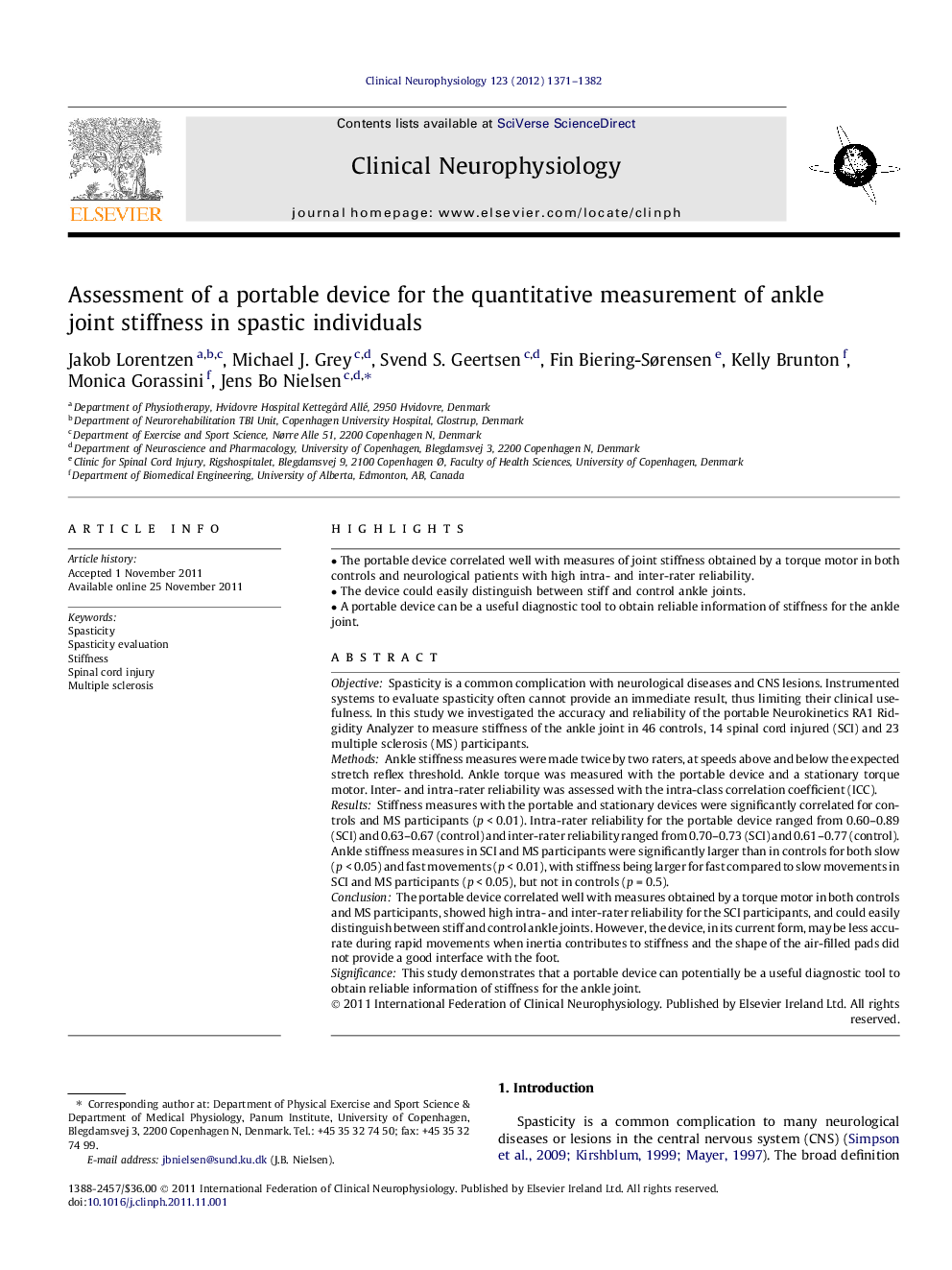| Article ID | Journal | Published Year | Pages | File Type |
|---|---|---|---|---|
| 3045500 | Clinical Neurophysiology | 2012 | 12 Pages |
ObjectiveSpasticity is a common complication with neurological diseases and CNS lesions. Instrumented systems to evaluate spasticity often cannot provide an immediate result, thus limiting their clinical usefulness. In this study we investigated the accuracy and reliability of the portable Neurokinetics RA1 Ridgidity Analyzer to measure stiffness of the ankle joint in 46 controls, 14 spinal cord injured (SCI) and 23 multiple sclerosis (MS) participants.MethodsAnkle stiffness measures were made twice by two raters, at speeds above and below the expected stretch reflex threshold. Ankle torque was measured with the portable device and a stationary torque motor. Inter- and intra-rater reliability was assessed with the intra-class correlation coefficient (ICC).ResultsStiffness measures with the portable and stationary devices were significantly correlated for controls and MS participants (p < 0.01). Intra-rater reliability for the portable device ranged from 0.60–0.89 (SCI) and 0.63–0.67 (control) and inter-rater reliability ranged from 0.70–0.73 (SCI) and 0.61–0.77 (control). Ankle stiffness measures in SCI and MS participants were significantly larger than in controls for both slow (p < 0.05) and fast movements (p < 0.01), with stiffness being larger for fast compared to slow movements in SCI and MS participants (p < 0.05), but not in controls (p = 0.5).ConclusionThe portable device correlated well with measures obtained by a torque motor in both controls and MS participants, showed high intra- and inter-rater reliability for the SCI participants, and could easily distinguish between stiff and control ankle joints. However, the device, in its current form, may be less accurate during rapid movements when inertia contributes to stiffness and the shape of the air-filled pads did not provide a good interface with the foot.SignificanceThis study demonstrates that a portable device can potentially be a useful diagnostic tool to obtain reliable information of stiffness for the ankle joint.
► The portable device correlated well with measures of joint stiffness obtained by a torque motor in both controls and neurological patients with high intra- and inter-rater reliability. ► The device could easily distinguish between stiff and control ankle joints. ► A portable device can be a useful diagnostic tool to obtain reliable information of stiffness for the ankle joint.
